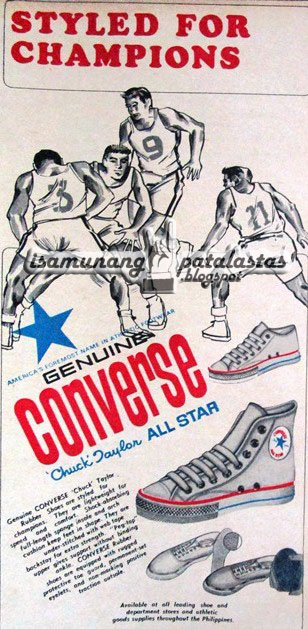 |
| ' A LITTLE WHEEL DOES A LOT OF WASHING' LAUNCH AD, 1965 |
WHEEL, a product
of Philippine Refining Co.,(PRC), was one of the leading detergent bars of the
1960s, a precursor of ‘SUPERWHEEL’, which would turn out to be even bigger. In 1965, a
new campaign was rolled out, that touched on the capacity of one slow-melting detergent
bar to handle bigger washloads—making WHEEL,
in effect, cost-efficient, economical, giving value for money unlike any other.
The thematic campaign ‘A Little Wheel Does a Lot of Washing’
was developed by J. Walter Thompson, Phils., and to make the promise come alive, the
agency employed large Filipino families—obviously with loads and loads of laundry
to wash--- to provide testimonials to WHEEL’s ability to handle large volumes
of dirty clothes.
Leading off the print ad series were members of the DELA
ROSA FAMILY., 10 children in all: Front Row: Raffy, Bobby, Charito, Monina,
Eddie and Cheque. Back Row: Menchu, Maricel, Mike, Ginger. “WHEEL
melts slowly”, Mrs. Dela Rosa
notes.”With a large family like mine, this is important.”

The family of ATTY. AND MRS. BARTOLOME RIVERA includes brood of 10: Renato (22), Mario (20), Rebecca (18), Reynaldo
(16), Antonio (14), Leonor (12), Jessica (10), Bartolome III (8), Josephine
(6), Nerissa (4). “WHEEL melts so
slowly…”, Mrs. Rivera gushes, “see now how it is so economical!”
The family of MR. AND MRS. BENJAMIN PEREZ consists of 9 children:
Cherrie (7), Fancy (14, twin), Benjie
(15), Jeannette (19), Mina (23), Lilian (17), Edwin (12), Glenn (3), Ruby (14,
twin). Mrs. Rosario Perez says: “Just a little WHEEL is enough to wash all our white clothes whiter . all our
colored clothes cleaner!”
The family of DR. AND MRS. GREGORIO CANCIO counts 9 kids:
Marie Ched (3), Jose Marie (4), Margaret (1), Imelda (8), Greg (14), Salvador
(12), Marie (10), Louies (9), Manny (6). Mrs. Imelda Borromeo-Cancio enthuses: “Economical WHEEL keeps my family looking neat and
clean, all days of the week!”.
This must have been a convincing campaign as by the mid to
late 60s, most large families do their washing the economical way—with WHEEL!


















































